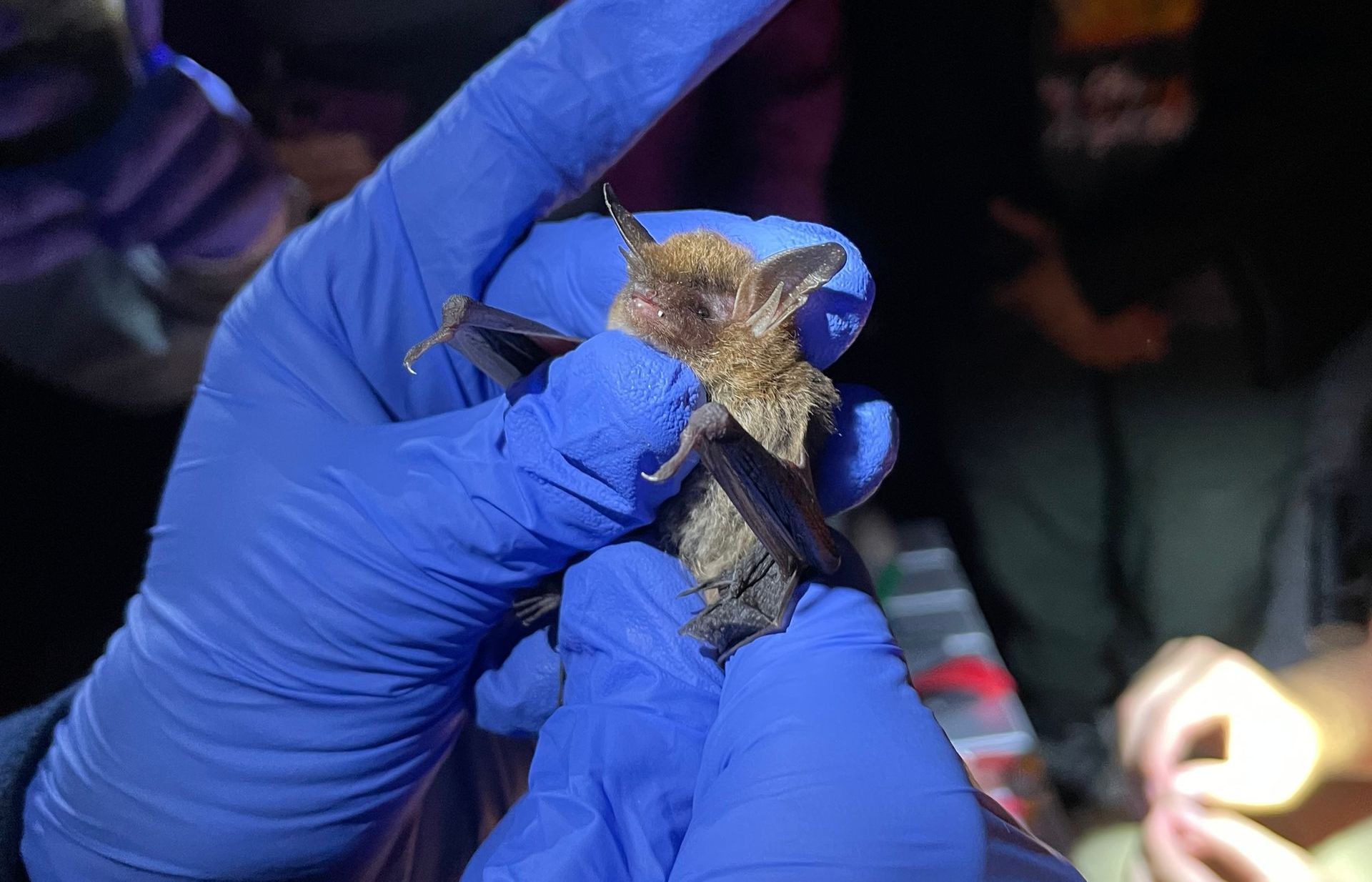Endangered Northern Long-eared Bats Discovered in Coastal Alabama
Discovery of Northern Long-Eared Bats in Coastal Alabama Offers Hope for Species

Orange Beach, Ala. – (OBA) – This week is National Bat Week, a time to celebrate these remarkable creatures and raise awareness about the importance of their conservation. The discovery of a breeding population of endangered northern long-eared bats in coastal Alabama is a hopeful sign for the species, and it is fitting that this news comes during National Bat Week.
The northern long-eared bat has a medium-sized body measuring 3 to 3.7 inches in length and a wingspan of 9 to 10 inches. Its back fur is medium to dark brown and the fur on its underside is tawny to pale-brown. Compared to other bats in the genus Myotis, this bat is distinguished by its long ears. Photo by Dylan Shaw
Biologists have discovered a breeding population of endangered northern long-eared bats in coastal Alabama. The discovery is significant because it indicates that the bats can survive in areas without caves, where they are typically found hibernating.
The bats were discovered during the Alabama Bat Working Group's annual Bat Blitz event in May 2023. On the last day of the event, biologists captured and released one male and two pregnant female northern long-eared bats in the Perdido River Wildlife Management Area in Baldwin County.
"This discovery is significant as there are no caves in these locations and the bats apparently do not hibernate," said Nick Sharp, a bat biologist with the Alabama Department of Conservation and Natural Resources. "Rather, they are active year-round and therefore not exposed to white-nose syndrome."
White-nose syndrome is a deadly fungal disease that has killed millions of bats in North America since it was first discovered in 2006. The northern long-eared bat has been particularly hard hit by the disease, and its population has declined by up to 100 percent in some areas.
The discovery of a breeding population of northern long-eared bats in coastal Alabama is a hopeful sign for the species. It suggests that the bats may be able to adapt to white-nose syndrome and survive in new areas.
Biologists are continuing to study the northern long-eared bat population in coastal Alabama. They hope to learn more about how the bats are able to survive without caves and whether they are exposed to white-nose syndrome.











